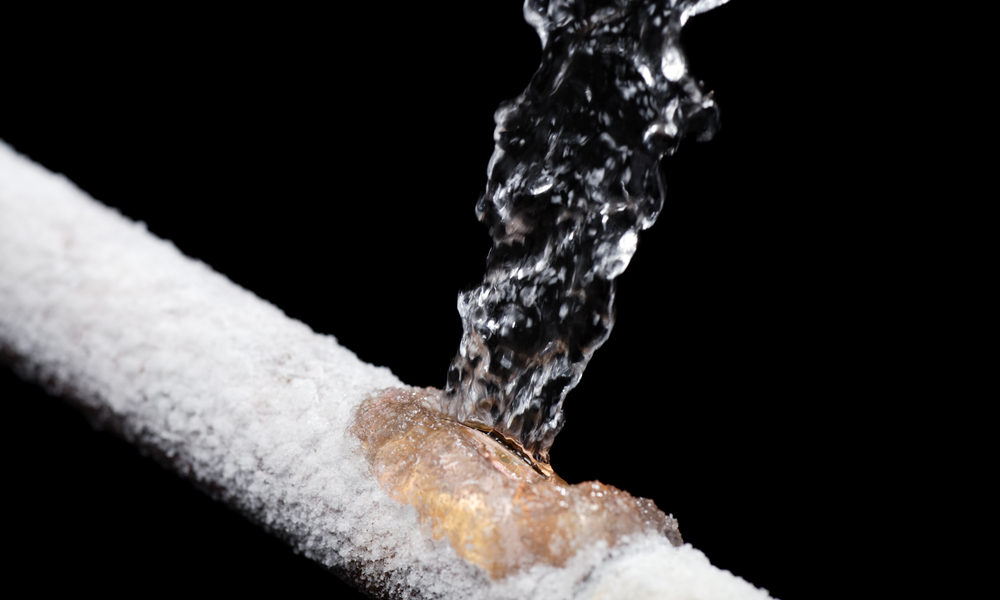Pipes about expire
New research helps pipe owners intervene before the damage is done.
When you turn on the tap, you expect to see clean good water. Many of us take for granted that water and heating will be available at a reasonable price. While there are plenty of methods for detecting leaks, there is a shortage of methods that assess the condition of the pipes. Researchers in Lund, together with major stakeholders within the water and district heating industry, are working to find safe and efficient ways to prevent damage, to allow heating and water to continue to be an integral part of our everyday lives.
The research project Pipestatus is to find tools for determining in advance whether a pipe line is in need of repair, rather than having to implement emergency measures when the damage is done. Using different types of technology, it is possible to analyse the status of the pipes and limit pipe excavations to those that pose the highest risk of a complete breakdown or minor leaks.
BAD PIPES ARE A GLOBAL PROBLEM. Many wastewater and district heating companies are currently struggling with old pipes, while the pressure to supply more people with water is increasing as cities expand. However, an old pipe does not automatically need replacing. Many old pipes can have a long life span whereas newer pipes may be at risk.
“Many pipes are about to expire and our district heating and wastewater companies know it. However, replacing pipes is expensive, and the decision on whether or not to dig up a pipe is usually based on educated guesses and gut feelings, rather than actual knowledge of the condition”, says Jesper König, project manager of Pipestatus. “Every year, major leaks occur, forcing schools and hospitals to close. This can be avoided.”
The research project includes hydrologists, geologists, mathematicians, statisticians and data analysts, working side by side with eight large pipe owners and some small technical businesses.
“We have included the owners in a clear and committed way, together with interested and committed researchers. The methods we have chosen to test have been discussed in consultation with the owners and they are extremely eager”, says Jesper König.
PIPESTATUS COMBINES BROAD EXPERTIS, trying to find the techniques that are suitable for a modern pipe maintenance system. The pipe owners are currently working to collect large amounts of data which have so far not been analysed properly, and this is one of the major components of the research project that they want to develop.
“Based on the pipe owners’ data, we will add previously known parameters which affect the condition of the pipes, for instance, whether there is heavy traffic near the pipe, the properties of the soil, precipitation and temperature fluctuations, etc. These data are retrieved from local road maintenance office, the Swedish Meteorological and Hydrological Institute, the Swedish National Land Survey and the Geological Survey of Sweden, and included in the analysis to try and establish a pattern. What did it look like before and what poses a potential risk leading to an impaired pipe?” says Jesper König.
“The project has also developed five technical tools.”
The project has also developed five technical tools which are now to be tested, in collaboration with the pipe owners who will choose the pipes for which they have concerns. Using these methods, the interior and exterior of the pipes and their surroundings will be examined, each of which can indicate the condition of the pipe.
One approach is called Delta-t, which sends an audio signal through the water gauge inside the pipe. The thicker the pipe, the faster the sound, and if the pipe is impaired by rust etc., the sound will travel at a slower pace. However, this will only indicate whether or not there is a problem somewhere along the examined pipe, not the exact location.
ANOTHER TECHNIQUE is to insert a small floating probe into the pipe which you can later retrieve, and it will have recorded both audio and video from inside the pipe.
“We base our work around the pipe owners’ list of the pipes they intend to replace. Before they start to dig, we perform our measurements and once the pipe has been excavated, we will check to see whether our analysis was correct. Here to help us, we have the SP Technical Research Institute of Sweden”, says Jesper König.
There is a major global market for the collective analysis model that the Pipestatus research project hopes to launch around 2020. Uncertainties as to the conditions of underground pipes are shared by all OECD countries.
“All around the world, people are working to come up with better methods to assess the condition of pipes. But I think Pipestatus is rather unique in its collective approach to district heating and drinking water pipes using our own methods which we integrate with extensive data analysis”, says Jesper König, and continues:
“If you compare it to the art of medicine, pipe analyses would be comparable to the work of Hippocrates. We examine the colour of the blood, and if it is yellow, the patient is sick, and if it is red, the patient is healthy. This is the starting point from which we want to advance.”
Text: Bodil Malmström
Facts
-
Read more about Pipestatus’s analysis methods:
-
Sweden Water Reserch
-
-
Research at Lund University on Smart cities







